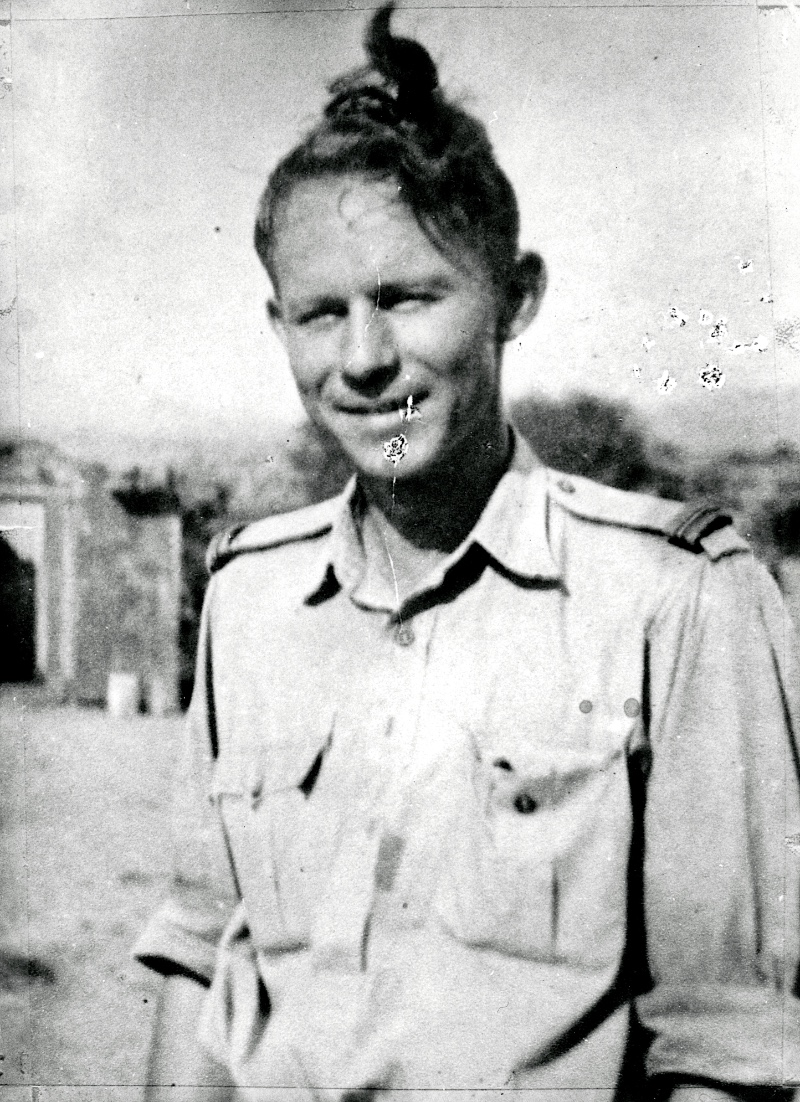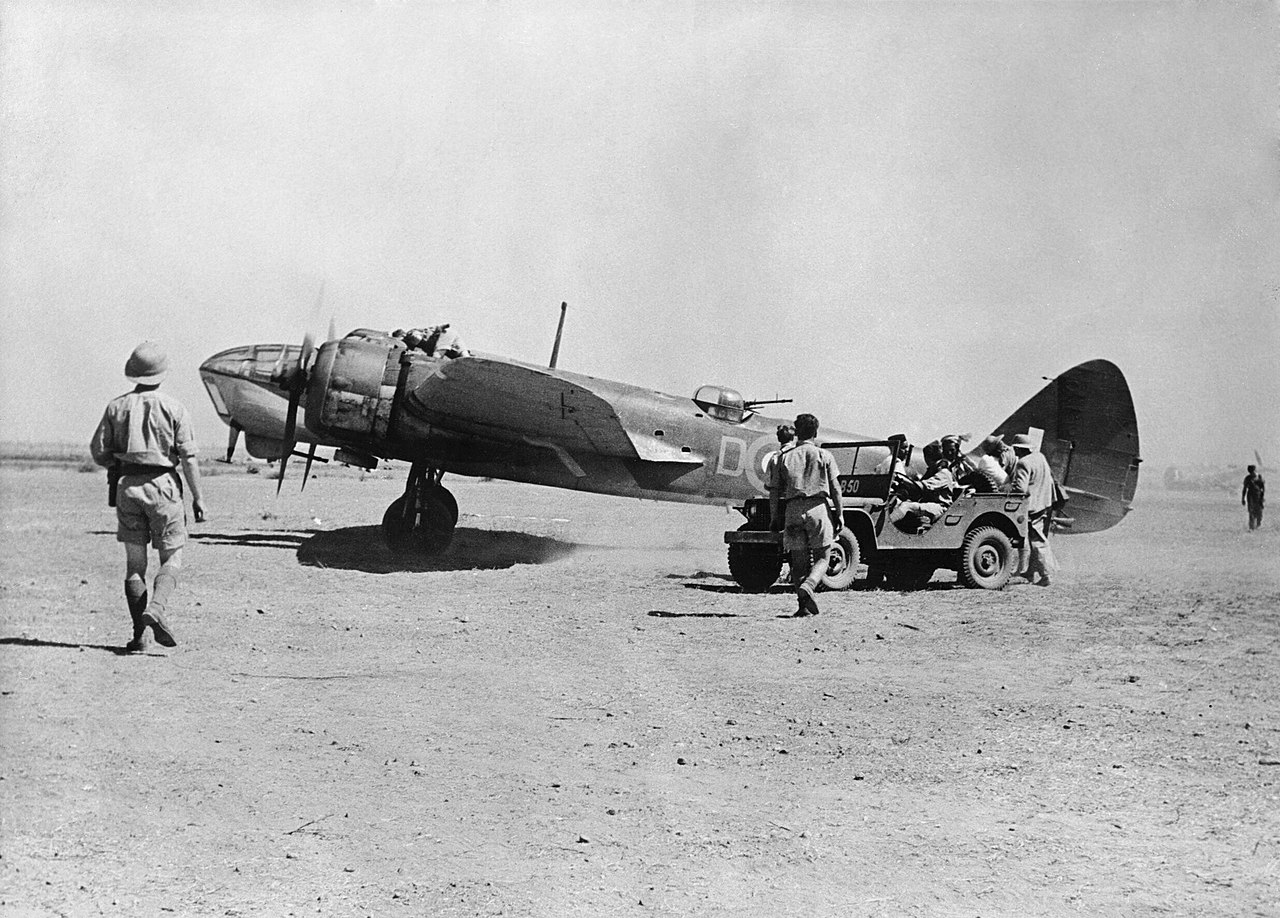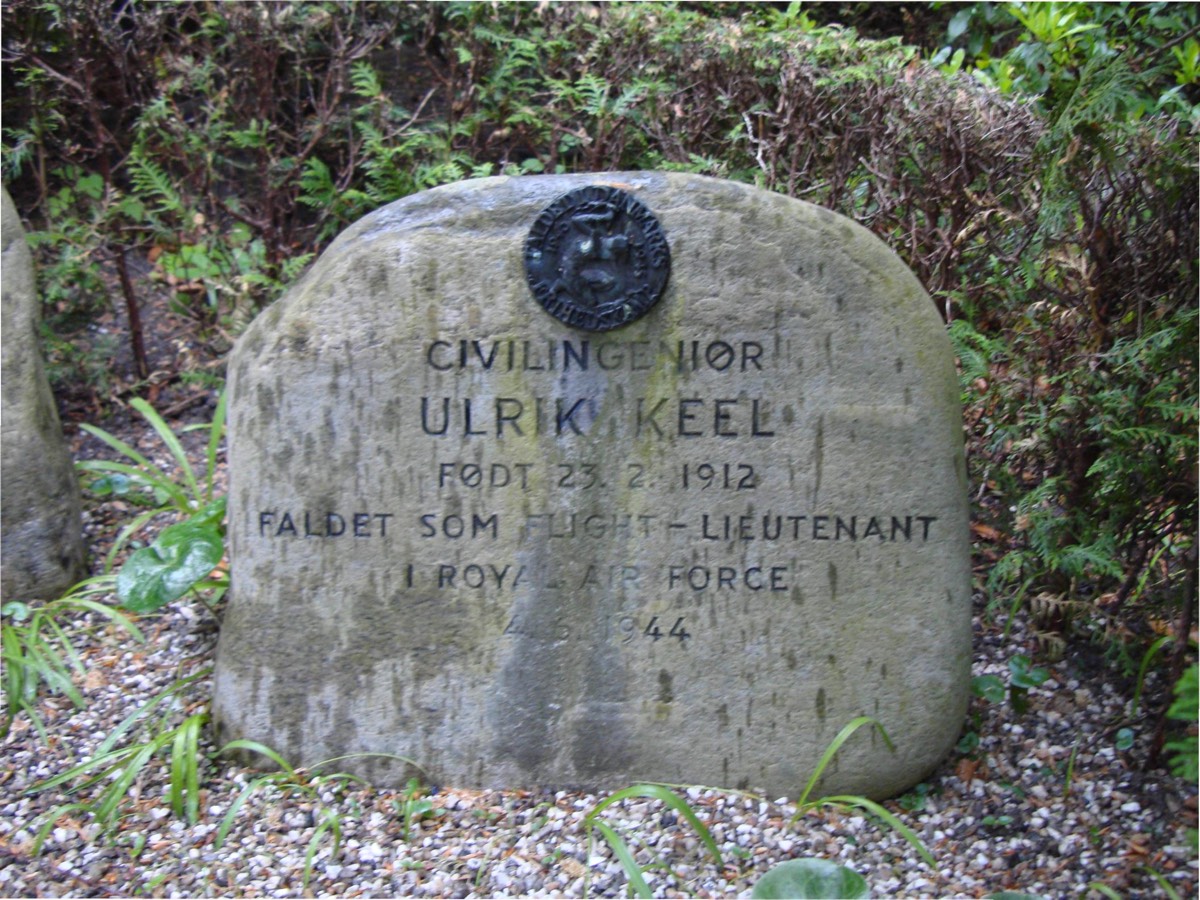Flt Lt Poul Ulrik Axel Keel
(1912 - 1944)
Profile
Ulrik Keel was working in British East Africa at the outbreak of war. He enlisted in the Royal Air Force in 1940 and was trained as pilot. He served in North Africa as well as in Burma and India. He returned to England as instructor, but was killed in a training accident in June 1944.
Poul Ulrik Axel Keel was born on 23 February 1912 in Copenhagen. He was son of director and engineer Harald Oluf Keel and Hilma Olivia Mathilde Victoria Keel (née Hansen).[1]
Keel passed his A-levels at Efterslægtselskabets School in 1931 and, the following year, he began studying at the Polytechnic in Copenhagen. In 1936, he was married to Dyveke Reumert, the daughter of the Danish actor Poul Reumert, and the later that year they had a son. Keel graduated as engineer in 1937 and Employed by A/S The Tanganyika Planting Company Ltd., a Danish sugar company in British East Africa, in the fall of 1938.[2]
As a consequence, as the German forces crossed the Danish border on 9 April 1940, Keel was working in British East Africa and, thus, was suddenly cut off from home, wife, and son in Denmark.
Fighting over the Desert
Keel volunteered for the Kenya Regiment on 19 June 1940, but only three months later, on 19 September, he transferred to the Royal Air Force. He was trained as pilot.[3]
He was posted to 45 Squadron at the end of training in December 1941. He had been promoted to flying officer at this point. The British Eighth Army had launched a main attack, Operation Crusader, towards the end of November aimed at pushing back the Axis forces through Libya and relieving the besieged garrison at Tobruk. This operation was not successful and, on 3 December, Rommel launched a counter attack sending two patrols towards Egypt. Keel flew a number of operations during December aimed at the advancing Axis forces. On his first operational sortie, on 12 December, Keel’s Blenheim (V6467) was hit by an anti-aircraft shell. The turret seat was destroyed and the W/op/AG Sgt J. F. Jennings was slightly wounded in the buttocks. Fortunately, the grenade did not detonate and Keel brought the aircraft back to base.[4] A few days later, the squadron moved from El Adem to RAF Gambut (LG 139). On 1 January 1942, the squadron attacked Axis forces at Bardia in a joint operation with the Army. Keel’s crew took off no less than three times. The results from the operation was not visible due to cloud and sandstorms in the area. These operations were the last to by carried out in North Africa. The next day, the squadron was withdrawn to Helwan in Egypt to await further orders. Keel had carried out a total of ten operational missions since arriving at the squadron.[5]
Defending an Empire
The squadron soon realised that they where going to South-East Asia. On 8 December 1941, the Japanese had attacked Pearl Harbor and, during the following months, they advanced rapidly South-East Asia. Keel’s squadron transferred to Burma in February 1942. Keel’s crew was one of twenty-four crews to fly from Egypt to Burma in mid-February 1942.

The squadron was deployed in the desparate defense of Burma soon after arrival in the area. Based at RAF Magwe in the Irrawaddy Valley they were reasonably safe from Japanese air attack, but also too far from the front line to be able to contribute. Therefore, a detachment was established at Zayatkwin, west of Rangoon, beginning operations on 16 February. The rapid advance of the Japanese meant that they had to return to Magwe three days later. The squadron worked under heavy pressure and in difficult conditions.
In early March 1942, Keel experienced this first-hand, when his Blenheim damaged a propeller at Zayatkwin. Zayatkwin had no repair facilities and only very modest repair facilities was in place in Burma, Hence, Keel had to fly the aircraft, with the damaged propeller, the 700 miles to Calcutta for repairs. While underway the starboard engine started vibrating violently. Keel was convinced that the engine could disintegrate at any given moment. Fortunately, it did not; unfortunately, the experience and probably other circumstances, affected Keel so much that he was unable to fly and was hospitalised for several months.[6]
Keel returned to 45 Sqn on 14 April 1942, but he was not yet well enough to return to flying duties. On 17 April 1942, he was posted to RAF Dinjan in Assam. This airfield was soon to become the centre of the RAF’s operations in the evacuation of Burma. Keel and two other officers were to assist with ground control at the airfield.[7] In March-May 1942, half a million people, soldiers and civilians, were trying to escape through the inhospitable Burmese jungle and mountains to India. A large-scale operation was undertaken to rescue these people. Until 8 May 1942, 31 Sqn was one of the most active units in this operation. The squadron had established a detachment at Dinjan, flying shuttles on the route between Dinjan and Myitkyia. Myitkyia in northern Burma was one of the last Allied airfields to be overrun by the Japanese. Keel supported this operation during while stationed at Dinjan. It is not clear exactly when he returned to Calcutta but, by 21 May, three other officers had been posted to Dinjan. The records do not hold a specific description of Keel’s service in Dinjan, but on 1 June 1942, the operational record book refers to a letter from the Officer Commanding, RAF Dinjan that prides Keel and the other officers
on their organisation (1) of food-dropping to troops and evacuees (2) of evacuation by air of Northern Burma troops and evacuees (3) of maintaining efficient and regular communication with China.[8]
In other words: Keel played an active role in the operational organisation of evacuation and relief operations from Dinjan.
Over the Burmese Jungle
On 14 July 1942, Keel was temporarily seconded to 31 Sqn and remained there until December 1942. He had, by then, returned to flying duties, and he became part of the squadron’s detachment at Dinjan. For the following two months, in particular, he operated over the Burmese jungle. These operations involved supplying soldiers and civilians who were trapped in, or on their way through, the Burmese jungle, as well as evacuating some of those who had reached Dinjan to Calcutta.
His first operation from Dinjan was carried out on 2 August 1942, dropping supplies over Shingbwiyang in the northern part of the impassable Hokawng valley, between Ledo and Myitkyina.[9] By May 1942, the small village of Shingbwiyang had turned into a refugee camp.[10] Several of Keel’s operations involved supply drops in this area. Keel was flying as second pilot. During the following five weeks, Keel flew twenty operations. In-between the supply missions, Keel was airlifting refugees from Dinjan to Calcutta. One of the more prominent figures, he was evacuating was the Chief Commissioner of Railways in Burma, Sir John Rowland, who had fought his was through the jungle for three months before reaching Dinjan.
Keel left Dinjan on 13 September 1942. He spent the next few months carrying out a number of training and test flights, as well as flights in the squadron’s Douglas DC-2 aircraft between bases in India.[11]
Converting to the Vengeance
He returned to 45 Sqn on 17 December 1942. At this time, the squadron was one of several squadrons planned to convert from Blenheim to Vultee Vengeance IA aircraft. Even if Keel never got to fly the Vengeance operationally, he did not avoid dangerous situations. On 23 April 1943, he came close to crashing in Vengeance IA (EZ842) due to a mechanical failure.
Three weeks later, on 13 May 1943, Keel was admitted to the hospital, and ‘A’ Flight was taken over by his deputy, Fg Off. Christensen, RAAF. It is not clear from the material, when he was released from hospital, but in June he lost the rank of Acting Flt Lt due to his sick leave. On 16 August 1943, he was posted from 45 Squadron to Manipur Ferry Pool.[12]
Instructor in the UK
He then returned to England, becoming an instructor at 16 OTU. However, he was killed in a training accident on 4 June 1944, when his plane, Wellington Mk. III (BK470), crashed during take off from RAF Barford St John. Halfway down the flarepath, the engines of the aircraft lost power and decelerated as if Keel had throttled back. As the crew realised that something was wrong, they braced themselves in their respective positions. The aircraft failed to take off, continued at great speed, and disappeared into a valley at the end of the runway. The aircraft just became airborne, but touched down again on the runway and crashed into some farm buildings. The crew—except Keel—were able to exit the aircraft.[13]

Endnotes
[1] DNA: Parish record, Frederiksberg parish.
[2] Hannover, Dansk Civilingeniørstat 1955 (1956), p. 571.
[3] Record from the Kenya Regiment (Rooken-Smith).
[4] NAA: A705, 163/127/36.
[5] NA: AIR 27/455.
[6] Jefford, The Flying Camels (1995), p. 183–209.
[7] NA: AIR 27/351.
[8] NA: AIR 27/455.
[9] NA: AIR 27/351.
[10] Goodall, Exodus Burma (2011), pp. 168–194.
[11] NA: AIR 27/351.
[12] Jefford, op. cit., pp. 246–248.
[13] NA: AIR 29/656.